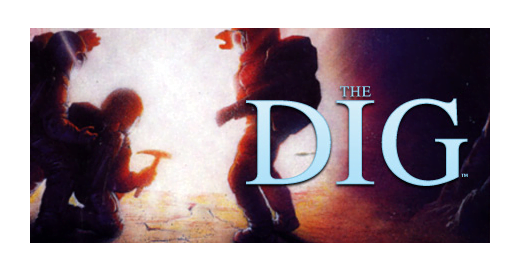The 1990s is a compressed period of time when a lot of very interesting things happened very quickly, often on surprisingly small budgets when we talk about videogames. It can be hard to grapple with but Street Fighter II, Doom, Aladdin , King’s Quest VI and Super Mario Kart all released in the same year (1993), and even though the games are all clearly contemporary, they don’t necessarily feel it. Similarly, if you look at the videogame releases of 1998, you’ll find a deep seam of industry-shaping bangers and first-releases of important developers, a sort of world-shaking year of releases, only to find that the next year, 1999, more and possibly bigger releases happened.
This is just what happened in the 90s: Shareware, CDs, existing distribution software and an exploding marketplace meant a lot of stuff happened. One thing that happened was that Steven Spielburg pitched a videogame to the people who made Star Wars, and they got a Hugo-And-Nebula Award winning science fiction writer to write the game’s script.
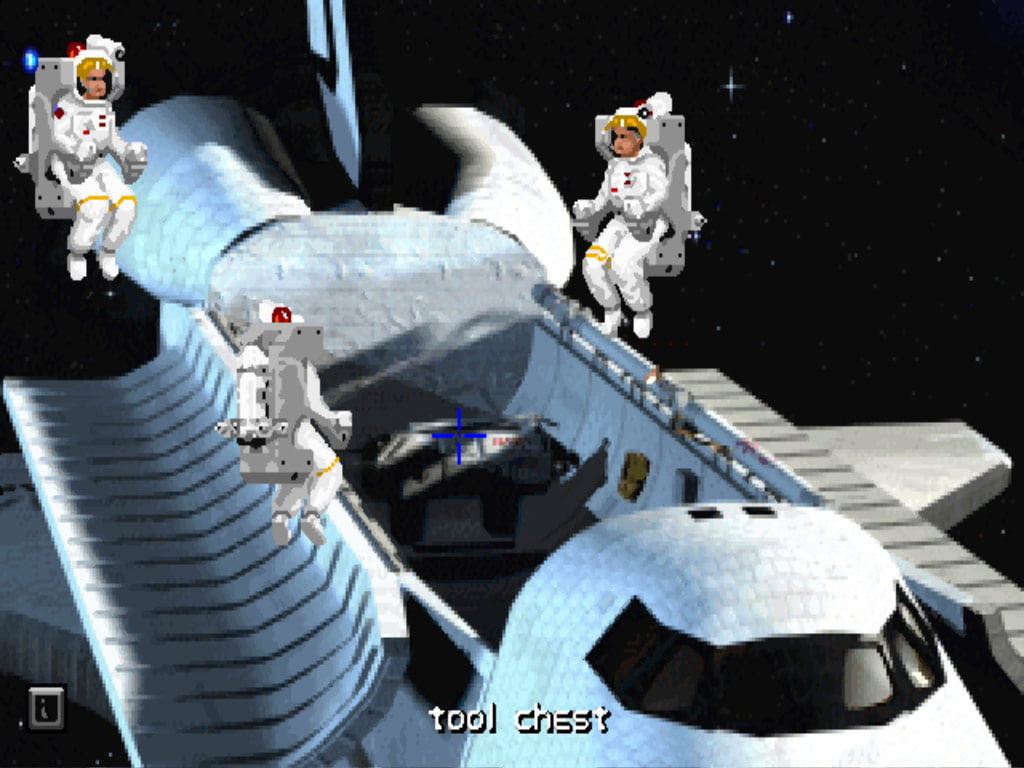
It starts with an asteroid on course with earth, which we nuke – of course – and the expedition in a space shuttle to go check it out. They send a scientist, a journalist, and a Protagonist, who find that the asteroid was not just a rock, but an alien artifact that, with the wrong poke-and-probing, suddenly takes the characters away. The story becomes about doing the hypothetical science of xenoarchaeology, of asking the question about what alien life we find would even look like, what their intentions might be, and how we could even deduce that.
By the way, if you’re still looking for ‘gaming’s citizen Kane,’ this is definitely one of the examples. It’s a game that wanted to be taken seriously and to tell a serious story about serious adults and big, philosophical questions. It’s a science fiction narrative about first contact, about life and death in the face of eternity, and whether it’s our place to break the chains of life and death, or if maybe it’s best that we let the world we live in behave the way we’re told it does. You know, classic science fiction stories of What If We Improve Things, But Too Much?
I really like The Dig, even if it always feels to me, in hindsight, the loser in a duel with Beneath A Steel Sky, but Beneath a Steel Sky is about how it’s a good thing to fuck over capitalists, surveillance states, and shoot cops in half, while The Dig is a game that mixes in questions of existential realities with one of the most frustrating turtle-related puzzles in all of narrative adventure.
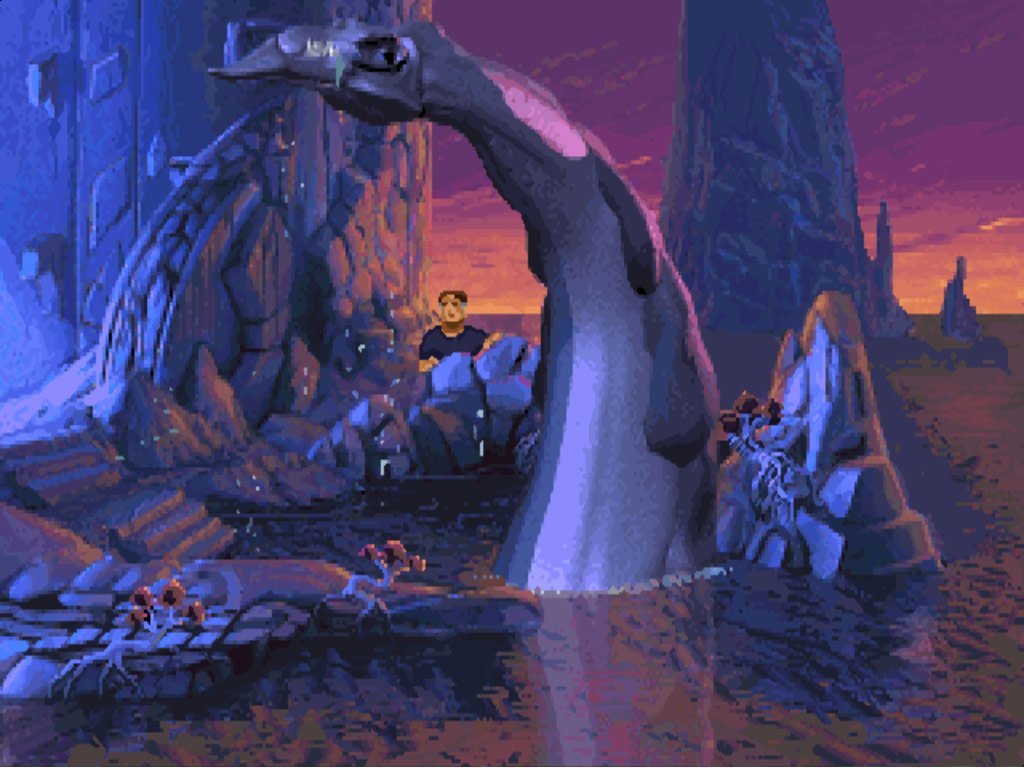
When you think about it, what exactly is the story of a narrative adventure? When you think about a sequence of events, from A to B to C to D, do many of them have a specific, coherent narrative, or are they instead a number of specific incidents that have to happen, with some sort of fuzzy noise between those points?
Gus Von Sant once made an entire movie, Gerry, out of the bits in a narrative that movies normally cut; the long, slow, walking sequences between the dramatic moments of a movie. A sort of long-form example of the kind of control movies have over their experience, the way that if they wanted to, they would present you with devastating tedium, which they normally spare you. In videogames, we often embrace that tedium, we are often asked to be the ones solving that tedium, and in the narrative adventure, it’s kind of the only thing to do.
The story of Monkey Island tends to be about the funniest moments in sequence; there’s no talk about the four or five times you tried to stick the lice on the comb, and failed, or the many, many times you redid a dialogue sequence in case you missed something or you watched the kid with the bottomless cup over and over again because damnit I know I can work this out. We excuse these moments between them. I think that this is why the defining characteristic of the narrative adventure game from Zork through to, well, really, up until the narrative adventure game kind of collapsed as a triple-A franchise in around 2005, was a comedy. Even the most brisk and aggressively paced failure-resistant narrative adventure of the day, Full Throttle still had a bunch of sequences where the story jerked to a weird halt to let you do things like release bunnies across a minefield.
If you wanted to make a serious narrative adventure – or rather, a narrative adventure that adorned itself with the tropes and hallmarks of what we consider ‘serious’ narrative – you often found yourself confronted with some challenges you had to solve in creative ways. The Last Express was a mystery adventure where everything was on an extraordinarily tight timer, meaning that the narrative eventually never had room (or time) for you to dick around trying to Use Airsick Bag Bottle. A number of the Gabriel Knight games relied on existential threats and Gabriel being just an immense fuck-up to keep you from solving problems by just having an adult conversation with someone. Even then, there were always going to be impediments that veered on the silly, as a Serious Story has Serious Stakes and you’re often left with the question why is doing this tower of hanoi puzzle solving anything?
In The Dig the answer is a legitimately interesting one: The reason you’re solving puzzles is because the entire thing you’re in is a big artifact designed to try and communicate with people who have no common language, experience, or even reliably expected sensory organs. The whole point of the process of xenoarchaeology is finding ways to prove the ability to deduce information from a system without meaningful communication – what kind of communication can an entity that is not human use to communicate to humans. How would we even conceive of that? A common canard is to communicate using prime numbers, to indicate a sequence that we think is universal… but that’s a start. What if you’re not there to respond? What kind of puzzlebox can you make that a human could understand and you can’t make it knowing anything about a human?
It’s a really good setup for why the serious story about whether or not people should be immortal or what it would do to your brain to survive dying (oh and this happens and we’ve seen it and it doesn’t turn people into assholes) can happen while surrounded by what is, for lack of a better term, puzzle opera.
I don’t think this is universally applicable! I think that you can’t necessarily take any game and say ‘well, we’re going to include these puzzles because of xenoarchaeology.’ It’s more that it provides an example of how you can frame puzzles, and that therefore, you can treat your puzzles as if they are things in the world, and use them to enrich the world, rather than just treat them as random impediments.
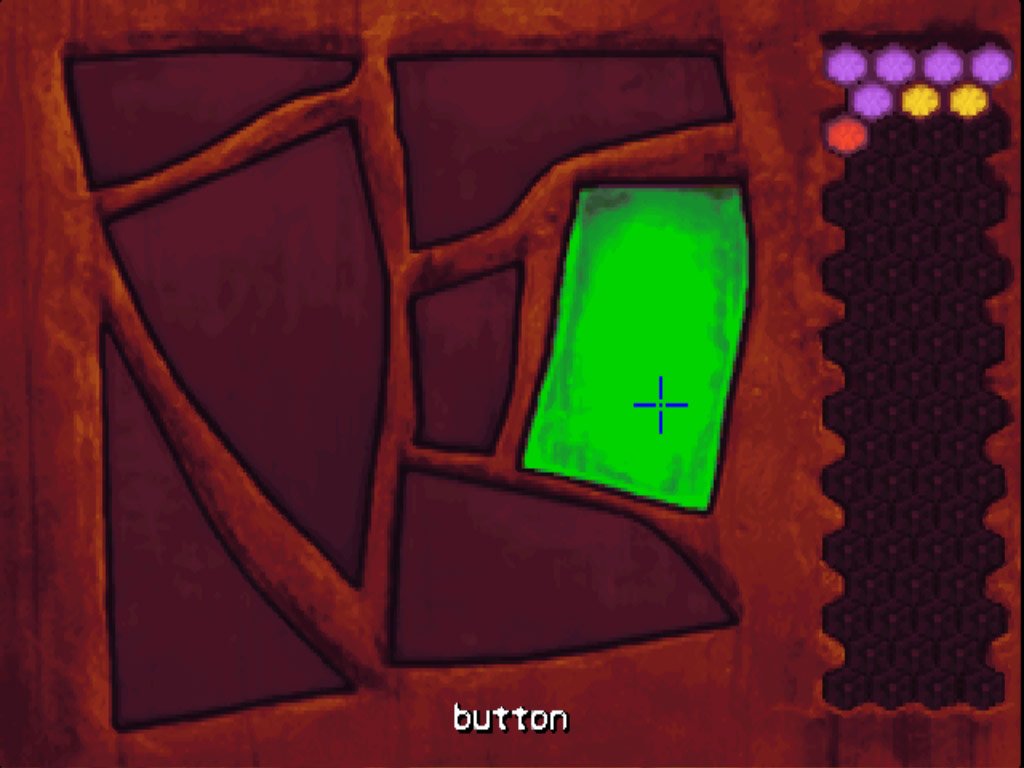
Anyway, a thing I’ve been skirting around so far is that one of the writers of this game is the author of Ender’s Game and renowned, open, public and proud homophobe, Orson Scott Card. This isn’t an exaggeration of a position left undefended, or an interpretation of a theme in the work – Card has written about how he wants to see homosexuality criminalised. Which means that all the words spent on this otherwise very interesting game have the big fat asterisk of oh wait, this work was made, in part by, and probably micro-finances the continued existence of someone who sucks.
Orson Scott Card sucks. I like The Dig. I’ve wanted to talk about The Dig for a long time, but I haven’t. How do we handle these competing considerations?
First it’s a little easy to just go ‘well, it’s not that much of a Card work.’ How much this one work reflects Card’s worldview, how much this is a Card work to you is going to be specific, and you may feel that The Dig is too much, that the value it gives him is too much, to go and buy it. I don’t recommend you buy it – it’s not so unique that anyone should do anything that gives them even the faintest moral qualm to purchase it. I mean, you could go buy it on GoG, which are owned by CD Projekt Red, which are responsible for the Cyberpunk 2077 dickgirl campaign and also extensive crunch to make that game, but on the other hand, Ciri is attractive, so who’s to say that any of these things are acceptable or not? Point is, you can find along the path of this game into your life, there’s a lot of reasons to not buy it, and also, this kind of ‘look at the bad people who benefit from you living your damn life’ association is even more structural than we want it to be.
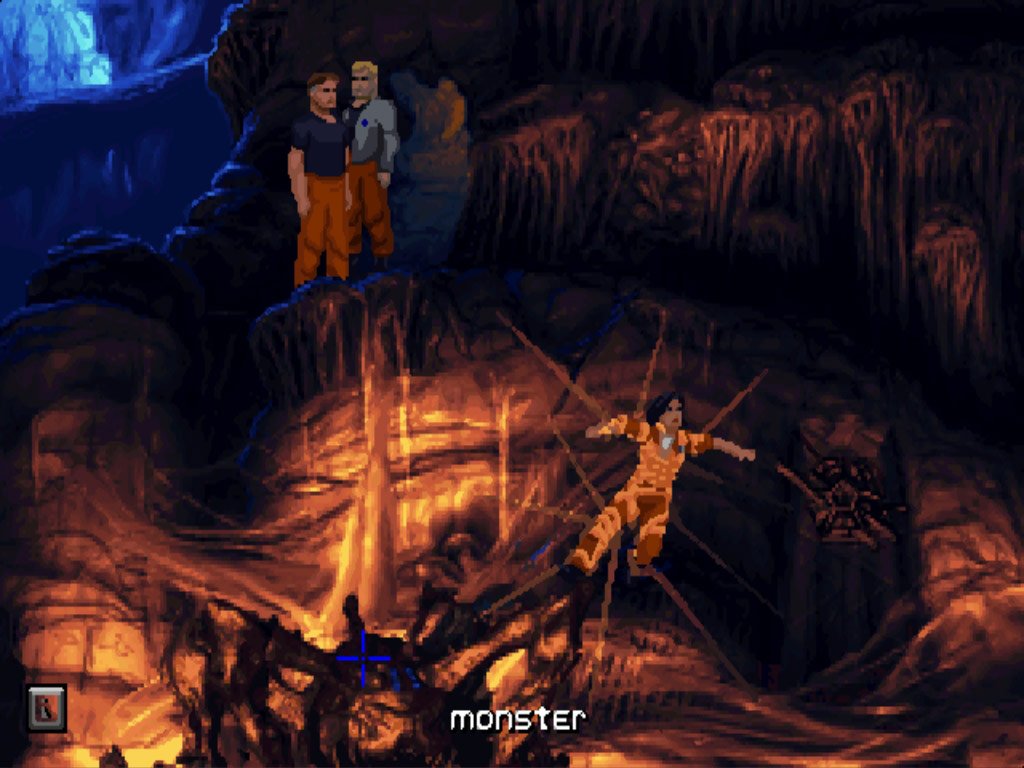
Last year, I wrote about the 1994 Blizzard Entertainment game Blackthorne. I talked about how we were encouraged to see that game as an avatar of Blizzard, and therefore, an extension of its moral structure or its cultural values. That a game I liked and was good was a product of Blizzard would make it hard to confront that Blizzard, as a company, might be full of terrible abuse, and this thing I liked was therefore stained by the hands of this monstrous system. My conclusion was that no, these things are orthogonal – it’s entirely possible that absolute shitheads were responsible for something I liked, and that didn’t mean I had to forgive them their shitheadery. Disney can make a good TV series, that doesn’t mean they’re a ‘good’ actor in this space. We can wrestle the world into favourable shapes, it doesn’t deserve credit for our work.
When we talk about these big, collaborative works of fiction, where there are actors and scriptwriters and set designers and programmers and all sorts of different people trying to make a single coherent whole from scattered pieces, it seems somehow inadequate to ignore the work of the cellist and the composer and the voice actors in the name of letting their work all be defined by the worst person (we know of) who worked on the project. It makes the whole of this work into Card’s, it attributes its best to him and his worst to it, even the stuff he had nothing to do with.
My personal solution is this: To talk about The Dig, and to ensure the conversation about The Dig includes this repeated message that Orson Scott Card is one of the people who contributed to this game, and Orson Scott Card sucks ass.
